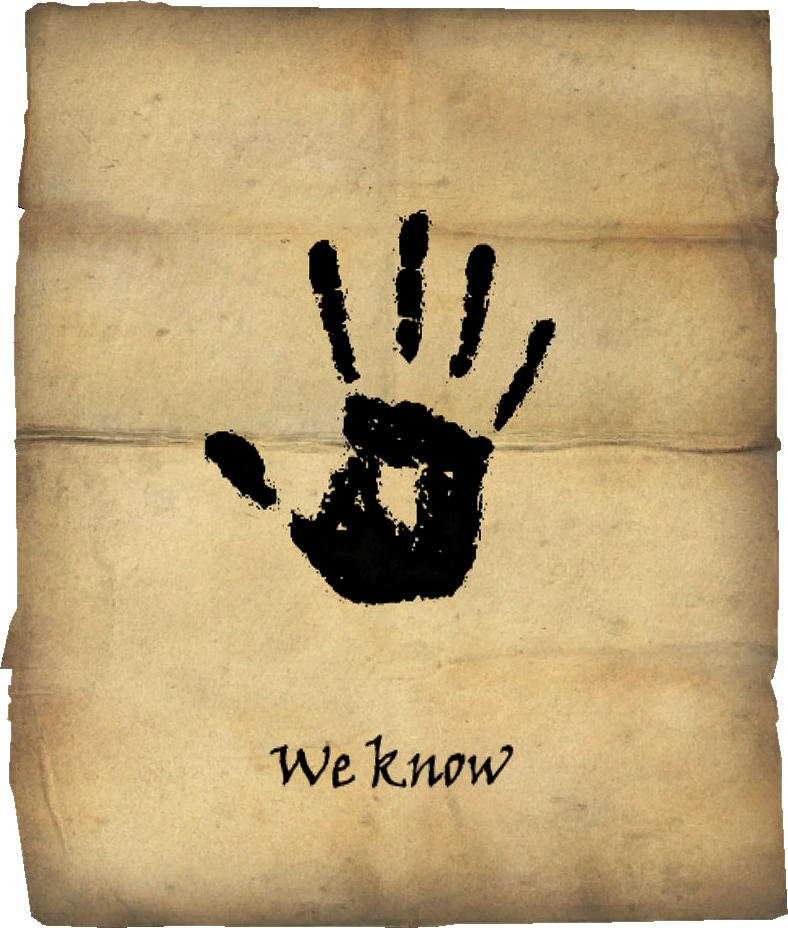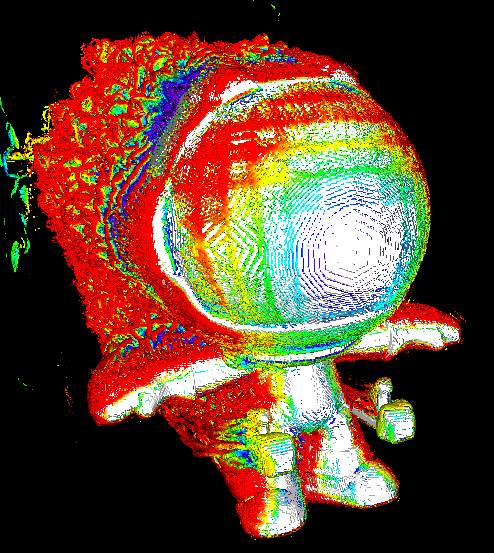Fun Creative Labs fact: the reason soundcards were popular in the '90s was that while most PCs by that time had built-in MIDI synthesizers, the instrument sounds were created with a very cheap version of a synthesis technique known as FM (for frequency modulation) synthesis. The first synthesizers (e.g. the Moog) used analog circuits known as oscillators to produce sounds in the form of sin waves, square waves, triangle waves etc. These were really not able to mimic the complex waveforms generated by real instruments, even when multiple oscillators were combined into one sound - and in those days adding oscillators just increased the cost of the circuitry in a linear fashion. FM synthesis essentially used one oscillator to modulate (aka change the frequency of) another waveform-generating oscillator, and this produced much more complex waveform output that could (sometimes, at least) mimic real-world instruments. So much more realistic sounds could be produced by just doubling the number of oscillators in the circuitry, instead of multiplying the oscillators by 10 or 100 or whatever and still not achieving very much sonically.
When it came time to build sound generators into PC chips, FM synthesis was the natural technique since the manufacturers still wanted it to be as cheap as humanly possible, even though the circuits were now digital instead of analog. And so was born a generation of shitty, tinny-sounding PCs. Along came Creative Labs with their AWE32, a synthesizer card that used wavetable synthesis instead of FM. Wavetable synthesis stored an actual digitally-sampled sound bank of a real instrument for each of the defined MIDI instruments, with added loop points for instruments (like flute, strings etc.) that needed to be able to produce an arbitrarily long note. By today’s standards, the AWE32 sounded nearly as bad as the cheap FM stuff, but at the time it was fucking mind-blowing. It even had the capacity to load in your own instrument samples to replace the built-in ones, although this was a bit of a pain in the ass to do.
At the time (1995-ish) I was developing a series of Windows applications that let people compose music on their PCs, and while it worked well, the actual quality of the music when played through a shitty built-in FM sound chip was depressingly awful and I had a lot of trouble convincing people it was a worthwhile endeavor (my parents were particularly prone to eye-rolling when listening to the chintzy notes). My first AWE32 improved things massively - the problem was that nobody out in the world had one so it was impossible to target it with my application. I dealt with the problem by essentially giving up until years later when PCs because powerful enough to do wavetable synthesis entirely in code using just the processor itself. And nowadays I can run the stuff on a first-generation iPhone!
most PCs by that time had built-in MIDI synthesizers
Built-in? You had AdLib cards for FM synthesis, but they were never built-in and most PCs didn’t even have them. Adlib cards used the Yamaha OPL2 or OPL3 chip.
Along came Creative Labs with their AWE32, a synthesizer card that used wavetable synthesis instead of FM
You are skipping a very important part here: cards that could output digital audio. The early Soundblaster cards were pioneers here (SB 1.0, SB 2.0, SB Pro, SB16). The SB16 for example was waaaaay more popular than the AWE32 ever was, even if it still used OPL3 based FM synth for music. It’s the reason why most soundcards in the 90s were “Soundblaster compatible”.
Digital audio meant that you could have recorded digital sound effects in games. So when you fired the shotgun in Doom to kill demons, it would play actual sound effects of shotgun blasts and demon grunts instead of bleeps or something synthesized and it was awesome. This was the gamechanger that made soundcards popular, not wavetable.
The wavetable cards I feel were more of a sideshow. They were interesting, and a nice upgrade, especially if you composed music. They never really took off though and they soon became obsolete as games switched from MIDI based audio to digital audio, for example Quake 1 already had its music on audio tracks on CD-ROM, making wavetable synthesis irrelevant.
BTW, I also feel like you are selling FM synthesis short. The OPL chips kinda sucked for plain MIDI, especially with the Windows drivers, and they were never good at reproducing instrument sounds but if you knew how to program them and treated the chip as its own instrument rather than a tool to emulate real world instruments, they were capable of producing beautiful electronic music with a very typical sound signature. You should check out some of the adlib trackers, like AdTrack2 for some examples. Many games also had beautiful FM synthesized soundtracks.
Most of Creative’s AWE32 cards do use a real Yamaha OPL3 chip for FM synthesis, which can produce two-or-four operator voices. The latter of those can approach the quality of the voices in their DX7-family line of musical instruments. Even the older OPL2 chip that is limited to two-operator voices can sound great when programmed well (not that I’d call it realistic-sounding).
The other synth chip on the AWE32 is the Ensoniq EMU8000. That one does sample-based synthesis as you describe above.
Just wanted to note that Creative misappropriated the term wavetable synthesis when they marketed this and other sample-based synthesis cards of theirs, and the misnomer spread widely to the products of other companies and persists to this day.
You just unlocked a memory for me. One of my dad’s friends had a super cool keyboard, I think it was a Casio. It had midi, and a bunch of built in instruments. Then he had another friend, who was a huge geek, who figured out how to extract the midi instruments from the keyboard, so we could use them to replace the cheaper sounding midi instruments in windows.
Obviously it didn’t sound as good as the keyboard, because it still was dragged behind by inferior hardware on the PC. Not to mention the fact that some of the instruments just didn’t play, and that Windows liked to crash and revert all instruments back to the default if it didn’t like an instrument we tried to feed it, but I still remember it as something really badass.
That was a super interesting read - thanks for the writeup!
At the time (1995-ish) I was developing a series of Windows applications that let people compose music on their PCs, […] the actual quality of the music when played through a shitty built-in FM sound chip was depressingly awful
And the a Atari ST and Amiga 500 was released in the late 1980s.
I’m old enough to know that but I had virtually no interaction with computers until 1995 when I conceived the idea for my software (after reading Richard Dawkins’ The Blind Watchmaker) and bought a PC and Visual Basic 3 to try and make it happen. I understand that Ataris and Amigas were pretty damn advanced for their time and I wonder what I could have done with them if I hadn’t been busy smoking dope and trying to be an Anthropologist.
Along came Creative Labs with their AWE32, a synthesizer card that used wavetable synthesis instead of FM.
Creative Labs did wavetable synthesis well before the AWE32 — they released the Wave Blaster daughter board for the Sound Blaster 16, two full years before the AWE32 was released.
(FWIW, I’m not familiar with any motherboards that had FM synthesis built-in in the mid 90’s. By this time, computers were getting fast enough to be able to do software-driven wavetable synthesis, so motherboards just came with a DAC).
Where the Sound Blaster really shined was that the early models were effectively three cards in one — an Adlib card, a CMS card, and a DAC/ADC card (with models a year or two later also acting as CD-ROM interface cards). Everyone forgets about CMS because Adlib was more popular at the time, but it was capable of stereo FM synthesis, whereas the Adlib was only ever mono.
(As publisher of The Sound Blaster Digest way back then, I had all of these cards and more. For a few years, Creative sent me virtually everything they made for review. AMA).
Thanks for the anecdote. I love reading this kind of context-giving stories on how different our expectations on consumer-grade electronics were.
I still use my external soundblaster to connect to my 5.1 amp. I have HDMI to my TV and then toslink to my amp, but it was inconvenient having to have the TV on for listening music.
This hasn’t crossed my mind in decades. Not even in a “remember when” sense.
I still have a sound card, because I have a stupid sound bar that works great except it only takes optical audio input.
deleted by creator
Surprisingly, it’s not even on some high-end boards.
https://www.gigabyte.com/Motherboard/X670-AORUS-ELITE-AX-rev-10-12/
deleted by creator
Oh that is hilariously scummy. It’s probably 7.1 through HDMI…
deleted by creator
I looked at the more detailed specs, and here we have:
3 x audio jacks
2/4/5.1/7.1-channel
- You can change the functionality of an audio jack using the audio software. To configure 7.1-channel audio, access the audio software for audio settings.
If using 2-pole aux jacks, those 3 back panel female connectors only provide 6 independent channels. If the case has a front panel connector, you can push that to 8 channels.
The only way you’re squeezing 7.1 analog out of that is if you use the front panel as LR, use two of the three back panel ones as surround, and share center with the sub between the last remaining connector. But, that’s assuming that two of those back connectors aren’t for mic or line in.
Maybe you could squeeze digital output through those jacks, but then you’d need a compatible receiver. Either way, stupid design for such an expensive motherboard.
who is going to put a ryzen apu in a topend mobo??
The Ryzen 9 7950X has integrated graphics, but if someone is willing to dump that much on a processor, they’re probably buying a GPU with it.
deleted by creator
I think SPDIF is being phased out because it needs to use compression to do surround sound.
At least it was a real name. Nowadays it seems like every new company’s name is just a random jumble of letters solely because that .com was available.
blastr by creatv
They’re still around and they still make cards. The onboard audio in my PC broke, so I bought an Audigy FX and it’s served me ever since.
I think these days most people use their video card as a sound card because monitors/displays generally have audio out as well.
But yeah. I remember having endless problems getting one of the Splinter Cells to run (I want to say Pandora Tomorrow?). After literally weeks of googling and discussing the issue on forums with others with the same problem, we found out that it had issues with the onboard sound for certain motherboards. Went out to Best Buy, bought the cheapest soundblaster they had, and no problems.
Pro Audio Spectrum 16 gang represent.
Those whippersnappers have it so easy these days! They don’t even know what an interrupt is any more!
Anyone else remember having to set interleave on an RLL hard drive? “First you have to low-level format…”
I hate you for reminding me of those times. Lol
Fuck Creative. Letigious patent troll is the whole reason why 3D audio in games was stuck in the dark ages technologically for the longest time.
It was all fun and games until your thrustmaster and your soundblaster and your modem hit an IRQ conflict.
Plug-and-play was a godsend for gamers.
Plug and pray
The GUS for the win!
“Your sound card works perfectly”
“It doesn’t get any better than this!”
“Enjoying yourself?”
Gravis Ultrasound with red pcb reporting…
Did you get the matching Gravis Gamepad or was it late enough that you had a Microsoft Sidewinder?
Gravis gamepad :-)
Rock solid!
I still like Xonar cards, like the Xonar DG (though it isn’t compatible with my new PC). I always liked their interface more than the competitors, and it puts out excellent volume on my Logitech headset that is otherwise way too quiet for me. Never been a big fan of the simulated 3D environments on any of these cards, though. The only game it ever sounded decent in was No Man’s Sky, but even that still had a distant tinny sound to it.
I think most people just use external amplifiers these days, but I’m still using a third-party sound card.
And of course there was a short period of time where a sound card wasn’t required, but would actually improve performance by offloading audio processing to your sound card if you had one. And onboard audio at that time wasn’t great anyways.
And the mind blowing difference in midi quality if you heard the upgrade the first time…
And of course there was a short period of time where a sound card wasn’t required, but would actually improve performance by offloading audio processing to your sound card if you had one
we are at this point in history, but for graphics cards :)
Not in the same way, as you aren’t using the integrated gpu at all if you get an external one. I guess if you’re talking about shared ram this makes sense though.
I seem to recall the integrated sound wasn’t used either, when I had my sound card in - the audio connectors were going directly into the sound card.
yea, IDK how it works as I’ve never had a computer back then, but the quoted reply makes it sound like getting a sound card would take load off of the CPU.
I’ll give you 4 characters: 3dfx.
You can still get discrete sound cards (both internal and USB), though they’re more for audiophile stuff. With the PS5 touting big 3d audio improvements and HRTFs I half expected manufacturers to make a push to bring them back or at least feature sound features more prominantly in motherboards but I guess CPUs these days can just spare the cycles if you want fancy audio.
Generating music still benefits from offloading to discrete devices though. Like using a synth or multitrack stuff.
Modern CPUs can do all the audio processing you’d ever need (maybe barring some professional use cases like making music or editing a movie).
Audiophile external audio devices are just doing the conversion from a digital signal to an analogue signal.
I remember Battlefield 2 being a prime example for that. Not only did its performance improve once I added a discrete sound card, it also sounded much better.
I bought an X-Fi card just for that game.
Oh god AC97 era onboard audio was just bad, there was always weird glitchy sounds coming from interference elsewhere on the motherboard
Or when your mobile phone was about to ring.
That one was actually down to poorly insulated speakers and 2G phone signals dipping into the audible frequency range














